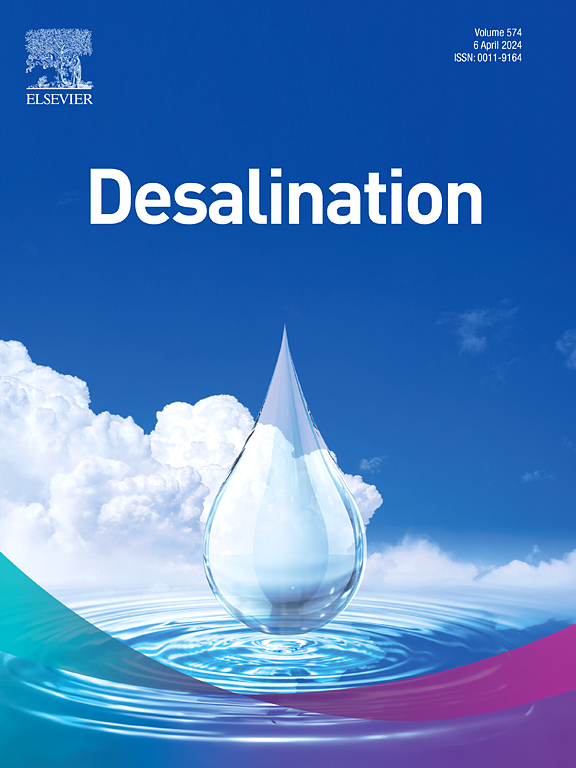Energy-force coupling in interfacial solar vapor generation: A pathway to sustainable salt management
IF 8.3
1区 工程技术
Q1 ENGINEERING, CHEMICAL
引用次数: 0
Abstract
Interfacial solar vapor generation (ISVG) has emerged as a promising approach for sustainable desalination, yet effective salt management remains challenging, particularly in high-salinity conditions. Herein, this review will introduce an energy-force coupling framework to analyze how solar energy is transformed into mechanical forces—such as gravity, capillary action, Marangoni convection, and diffusion—that drive essential functions of salt management: salt resistance for continuous vapor generation, zero-liquid discharge (ZLD) for combined vapor generation and salt extraction, and selective high-value salt (e.g. Lithium) concentration. By investigating capillary action for surface energy conversion, Marangoni-driven convection for gradient-based transport, and diffusion for concentration-driven ion separation, we elucidate the mechanisms through which solar energy sustains clean evaporation surfaces. This process is achieved by the coordinated interplay of multiple forces, enabling precise control of salt crystallization and facilitating targeted recovery of high-value salts. By reframing salt management as a dynamic interplay of solar-driven forces, this perspective provides a foundational approach to designing next-generation desalination systems that extend beyond water recovery to resource extraction, as well as offering transformative insights to guide sustainable desalination technologies aimed at addressing both freshwater and mineral resource needs.
求助全文
约1分钟内获得全文
求助全文
来源期刊

Desalination
工程技术-工程:化工
CiteScore
14.60
自引率
20.20%
发文量
619
审稿时长
41 days
期刊介绍:
Desalination is a scholarly journal that focuses on the field of desalination materials, processes, and associated technologies. It encompasses a wide range of disciplines and aims to publish exceptional papers in this area.
The journal invites submissions that explicitly revolve around water desalting and its applications to various sources such as seawater, groundwater, and wastewater. It particularly encourages research on diverse desalination methods including thermal, membrane, sorption, and hybrid processes.
By providing a platform for innovative studies, Desalination aims to advance the understanding and development of desalination technologies, promoting sustainable solutions for water scarcity challenges.
 求助内容:
求助内容: 应助结果提醒方式:
应助结果提醒方式:


